At the end of the year, we are once again presenting the articles in the 'Research and Technology' section in abridged form so that our readers can decide whether they would like to pick up and read one or two of the articles again. We hope that the editorially selected research papers and study reports have provided an overview of important future topics and development directions in electronics technology.
Optimization of printed circuit board technology processes and printed electronics
January: Electroplating and etching - Heterogeneous interfaces in practice
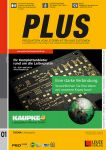 The authors of this article investigated heterogeneous interfaces on planar surfaces, such as printed circuit board panels. The aim of the investigation is to increase the deposition and etching rates in electroplating and wet chemical etching while ensuring satisfactory deposition homogeneity and etching rate homogeneity. They present a measuring method with which the local current distribution during electroplating can be determined directly on a printed circuit board panel. This is important for process engineers in the PCB industry or system manufacturers. The article takes a knowledgeable look at the processes in the heterogeneous interfaces that occur at the boundary between the liquid electrolyte or the etching medium and the panel surface. The particles (reactants) move most slowly in the boundary layer compared to the electrolyte or etching medium and the panel surface. Two new developments for optimizing the flow conditions in electroplating systems will be presented: gravity-assisted convection and direct flow with electrolyte recirculation. With the measuring system for local current measurement described in detail, users can optimize electroplating and wet chemical processes directly in production. This is because the local reaction rates can be recorded and displayed as local currents.
The authors of this article investigated heterogeneous interfaces on planar surfaces, such as printed circuit board panels. The aim of the investigation is to increase the deposition and etching rates in electroplating and wet chemical etching while ensuring satisfactory deposition homogeneity and etching rate homogeneity. They present a measuring method with which the local current distribution during electroplating can be determined directly on a printed circuit board panel. This is important for process engineers in the PCB industry or system manufacturers. The article takes a knowledgeable look at the processes in the heterogeneous interfaces that occur at the boundary between the liquid electrolyte or the etching medium and the panel surface. The particles (reactants) move most slowly in the boundary layer compared to the electrolyte or etching medium and the panel surface. Two new developments for optimizing the flow conditions in electroplating systems will be presented: gravity-assisted convection and direct flow with electrolyte recirculation. With the measuring system for local current measurement described in detail, users can optimize electroplating and wet chemical processes directly in production. This is because the local reaction rates can be recorded and displayed as local currents.
February: Printable electrode ink for the production of supercapacitors
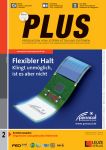 Several scientists from Finnish and German research institutions, including Ezgi İnci Yeşilyurt, Bosch Semiconductor Manufacturing Dresden, have been working on how a printable ink must be made in order to act as an electrode for so-called supercapacitors after the screen printing process. These are very suitable for energy storage due to their very high power density. The article shows how composites made of polyaniline (PANI) and CDC carbon (carbide derived carbon) can be produced by in-situ chemical oxidative polymerization. The researchers used environmentally friendly chitosan from crustacean shells as a binder. The article also discusses the screen printing process and the electrical properties of the supercapacitors produced in this way.
Several scientists from Finnish and German research institutions, including Ezgi İnci Yeşilyurt, Bosch Semiconductor Manufacturing Dresden, have been working on how a printable ink must be made in order to act as an electrode for so-called supercapacitors after the screen printing process. These are very suitable for energy storage due to their very high power density. The article shows how composites made of polyaniline (PANI) and CDC carbon (carbide derived carbon) can be produced by in-situ chemical oxidative polymerization. The researchers used environmentally friendly chitosan from crustacean shells as a binder. The article also discusses the screen printing process and the electrical properties of the supercapacitors produced in this way.
System integration
March: Electro-optical platform for open-source processors
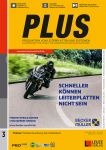 A project of the TU Dresden and the Fraunhofer-Gesellschaft has set itself the goal of developing a platform that promotes the system integration of photonic processing units (PPU) and photonic integrated circuits (PICs) through appropriate assembly and connection technology. The main focus is on the so-called electro-optical silicon interposer, an additionally required rewiring carrier between the PICs and the printed circuit board. The interposer contacts lasers, PPUs, photodiodes, logic gates and application-specific integrated circuits mechanically, electrically and optically. The scientists present the platform concept and two developed PICs with encryption mechanisms for trustworthy electronics. The research paper goes into detail about the design of the platform, which should combine as many optical and electrical components as possible. This includes design rules for the platform, the design of the two interposer layouts and the construction of a random number generator and a crypto multimode interferometer for encryption. The technological process for the production of the interposer and the random number generator is also described using easy-to-understand illustrations. To the scientists' knowledge, the platform developed as part of the BMBF-funded 'Silhouette' project is the first hybrid system-in-package approach to combine photonic circuits, photo and laser diodes and application-specific integrated circuits on a single substrate.
A project of the TU Dresden and the Fraunhofer-Gesellschaft has set itself the goal of developing a platform that promotes the system integration of photonic processing units (PPU) and photonic integrated circuits (PICs) through appropriate assembly and connection technology. The main focus is on the so-called electro-optical silicon interposer, an additionally required rewiring carrier between the PICs and the printed circuit board. The interposer contacts lasers, PPUs, photodiodes, logic gates and application-specific integrated circuits mechanically, electrically and optically. The scientists present the platform concept and two developed PICs with encryption mechanisms for trustworthy electronics. The research paper goes into detail about the design of the platform, which should combine as many optical and electrical components as possible. This includes design rules for the platform, the design of the two interposer layouts and the construction of a random number generator and a crypto multimode interferometer for encryption. The technological process for the production of the interposer and the random number generator is also described using easy-to-understand illustrations. To the scientists' knowledge, the platform developed as part of the BMBF-funded 'Silhouette' project is the first hybrid system-in-package approach to combine photonic circuits, photo and laser diodes and application-specific integrated circuits on a single substrate.
Environment/recycling
Topics dealing with sustainable electronics production were a focal point this year. In numerous discussions at trade fairs and other events, the editorial team recognized that this topic is of concern to many players in the electronics industry. Many research institutions are currently focusing on the harmfulness of PFAS for humans and nature in particular. This is not surprising, as this problematic group of substances is used in almost all areas of life and of course also in the electronics industry, but there is now a broad consensus on its harmful effects. We will also be addressing this topic in the coming year (issue 3/2025).
April: PFAS-type perpetual chemicals
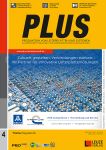 On the one hand, perfluorinated and polyfluorinated alkyl compounds (PFAS) appear to be absolutely essential in high-tech industries such as medical and semiconductor technology due to their properties; on the other hand, their accumulation in the environment and harmful effects on living organisms are undisputed. Prof. Wolfgang Hasenpusch, chemist and science journalist, therefore takes a closer look at these compounds. He first discusses the areas of application of PFAS (e.g. in lithium-ion batteries), the various health hazards they cause and their occurrence in the environment. The article focuses on PFAS that are suspected of being carcinogenic. Prof. Hasenpusch outlines the actual costs to society of monitoring the substances, purifying drinking water, etc. He sees the greatest risk of environmental contamination for Germany at the four most important production sites in the country and explains which PFAS groups are already banned in German and European legislation, what exceptions there are and the time frame in which the ban is to be enforced. Prof. Hasenpusch goes into detail about the areas of application and the hazard potential of four different groups: PFOA (perfluorooctanoic acid), PFOS (perfluorooctane sulfonic acid), PFNA (perfluorononanoic acid) and PFHxS (perfluorohexane sulfonic acid). These substances are particularly worrying because some of them are not only carcinogenic, but also mutagenic and toxic to reproduction - and are not broken down in the environment. The article is a passionate appeal for a more responsible approach to production and use and to the monitoring and setting of limit values.
On the one hand, perfluorinated and polyfluorinated alkyl compounds (PFAS) appear to be absolutely essential in high-tech industries such as medical and semiconductor technology due to their properties; on the other hand, their accumulation in the environment and harmful effects on living organisms are undisputed. Prof. Wolfgang Hasenpusch, chemist and science journalist, therefore takes a closer look at these compounds. He first discusses the areas of application of PFAS (e.g. in lithium-ion batteries), the various health hazards they cause and their occurrence in the environment. The article focuses on PFAS that are suspected of being carcinogenic. Prof. Hasenpusch outlines the actual costs to society of monitoring the substances, purifying drinking water, etc. He sees the greatest risk of environmental contamination for Germany at the four most important production sites in the country and explains which PFAS groups are already banned in German and European legislation, what exceptions there are and the time frame in which the ban is to be enforced. Prof. Hasenpusch goes into detail about the areas of application and the hazard potential of four different groups: PFOA (perfluorooctanoic acid), PFOS (perfluorooctane sulfonic acid), PFNA (perfluorononanoic acid) and PFHxS (perfluorohexane sulfonic acid). These substances are particularly worrying because some of them are not only carcinogenic, but also mutagenic and toxic to reproduction - and are not broken down in the environment. The article is a passionate appeal for a more responsible approach to production and use and to the monitoring and setting of limit values.
September: Increased risk of cardiovascular disease due to PFAS
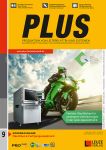 Worrying results of a current study by the German Center for Neurodegenerative Diseases are presented. PFAS can not only cause certain types of cancer, but also have a harmful effect on the lipid profiles in human blood, increasing the risk of cardiovascular disease. Worryingly, younger people are particularly affected. The design and results of the study and the conclusions drawn by the researchers are presented. As PFAS are used in almost all areas of life and are also known to be used in many areas of electronics production, it seems urgently necessary to examine exactly where PFAS are actually irreplaceable and where they can be replaced and at what cost.
Worrying results of a current study by the German Center for Neurodegenerative Diseases are presented. PFAS can not only cause certain types of cancer, but also have a harmful effect on the lipid profiles in human blood, increasing the risk of cardiovascular disease. Worryingly, younger people are particularly affected. The design and results of the study and the conclusions drawn by the researchers are presented. As PFAS are used in almost all areas of life and are also known to be used in many areas of electronics production, it seems urgently necessary to examine exactly where PFAS are actually irreplaceable and where they can be replaced and at what cost.
July: Recycling of electronics integrated in plastic
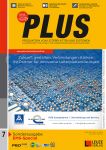 The article I wrote describes a process developed by scientists at the Leibniz Institute for New Materials in Saarbrücken and other partners that allows in-mold and printed electronics assemblies to be processed and recycled at the end of their service life. To enable recycling, a separating layer is applied to the polymer substrate during the manufacturing process before the metallic conductor tracks are produced. The article describes the manufacturing process, recycling and the electrical and mechanical properties of the assemblies in detail.
The article I wrote describes a process developed by scientists at the Leibniz Institute for New Materials in Saarbrücken and other partners that allows in-mold and printed electronics assemblies to be processed and recycled at the end of their service life. To enable recycling, a separating layer is applied to the polymer substrate during the manufacturing process before the metallic conductor tracks are produced. The article describes the manufacturing process, recycling and the electrical and mechanical properties of the assemblies in detail.
September: Conference report 'Electronic goes green' (e.g.g.)
Our editor-in-chief attended the extraordinary international conference 'Electronics goes green' in Berlin, which takes place every four years. He presents the development of the conference over the years with great sympathy and also with a critical eye, showing what successes have been achieved in terms of life cycle assessment in electronics production and what has not yet been achieved. He addresses current challenges in electronics manufacturing and how they are presented by the conference participants. The main topics that emerge are closed raw material cycles (reparability, modular principle, ease of maintenance and obsolescence management), the use of bio-based materials and the avoidance of PFAS in electronics production.
November: Energy recovery directly on the chip
Researchers from various European countries have developed a thermoelectric material that can be used in future to recover heat losses that occur at temperatures below 80 °C. They describe how adding tin to germanium can reduce thermal conductivity while retaining electrical properties and the advantages this brings. The researchers also discuss how the technology can be integrated into existing chip production processes.
December: Repairing old solar modules instead of chopping them up
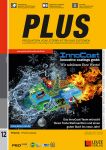 This December issue discusses a proposal by Egyptian scientists on how solar modules can be designed in such a way that they can be recycled or repaired from both a technical and economic point of view. Currently, disused modules are shredded, which ties up valuable raw materials and at the same time generates problematic waste. The scientists explain how solar modules are constructed and which processes are available for separating the materials according to the current state of the art, with their sometimes considerable disadvantages. They explain the factors that cause solar modules to fail or become inefficient towards the end of their service life. Based on this, they propose a new design for repairable modules. A comparison with conventional modules concludes the considerations.
This December issue discusses a proposal by Egyptian scientists on how solar modules can be designed in such a way that they can be recycled or repaired from both a technical and economic point of view. Currently, disused modules are shredded, which ties up valuable raw materials and at the same time generates problematic waste. The scientists explain how solar modules are constructed and which processes are available for separating the materials according to the current state of the art, with their sometimes considerable disadvantages. They explain the factors that cause solar modules to fail or become inefficient towards the end of their service life. Based on this, they propose a new design for repairable modules. A comparison with conventional modules concludes the considerations.
New materials and technologies in microelectronics
May: Hybrid graphene becomes ferromagnetic
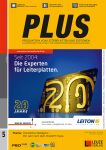 PLUS author Roman Meier presents research results from Zhengzhou University in China in the May issue. The Chinese researchers have investigated how graphene can be made ferromagnetic through the targeted introduction of hydrogen and oxygen atoms. This opens up new ways of transmitting and storing information, as not only the movement of electrons can be used, but also the magnetic properties.
PLUS author Roman Meier presents research results from Zhengzhou University in China in the May issue. The Chinese researchers have investigated how graphene can be made ferromagnetic through the targeted introduction of hydrogen and oxygen atoms. This opens up new ways of transmitting and storing information, as not only the movement of electrons can be used, but also the magnetic properties.
May: Photon chips and optical waveguides
A newly developed microchip is presented that uses the movement of photons rather than electrons to transmit information. The aim of research in this area is to further increase the computing speed of computers and at the same time reduce energy consumption. The article explains how this chip is constructed and how its manufacture can be integrated into established production processes. Also in the May issue, researchers from the Fraunhofer Institute IZM present the opportunities offered by the use of glass as a substrate material for the integration of optical waveguides. The researchers explain how the system they have developed can be used to characterize propagation losses in optical waveguides with complex layouts.
June: With integrated light to the computers of the future
 A project by researchers from TU Braunschweig and the University of Jena to combine electronics and photonics on a single chip is discussed. The promising material for this is porous gallium nitride. Using a new etching process, the researchers were able to introduce elongated, air-filled pores into the GaN. This makes waveguides with complex optical light guidance conceivable. The advantage: GaN and the established LED manufacturing process are compatible. This opens up the possibility of integrating electronic and photonic circuits.
A project by researchers from TU Braunschweig and the University of Jena to combine electronics and photonics on a single chip is discussed. The promising material for this is porous gallium nitride. Using a new etching process, the researchers were able to introduce elongated, air-filled pores into the GaN. This makes waveguides with complex optical light guidance conceivable. The advantage: GaN and the established LED manufacturing process are compatible. This opens up the possibility of integrating electronic and photonic circuits.
July: Connection technology with nanowires for highly integrated chips
Employees of the Fraunhofer IZM in Dresden and partners from science and industry have further developed an interconnection technology with which 100 nm to 1 µm thin copper wires can be produced on 300 mm silicon wafers. The researchers describe how the nm wires are produced on the Si wafer. Using bonding technology at room temperature, the electrical connection can be made with these very thin wires. The area required for the connections is much smaller with this technology than with the established flip-chip technology, for example.
August: Dynamic two-dimensional covalent organic network connections for switchable quantum states
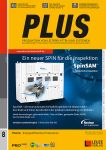 Covalent organic frameworks (COFs) are structured porous materials made of organic molecules that are linked by covalent bonds to form a network. These structures can be used to produce functional materials with molecular precision, as their structural, optical and electronic properties can be specifically cultivated, which is an important step towards switchable quantum states. A research team at TU Dresden has succeeded in developing a design strategy that allows the materials to open and close their pores gradually and in a controlled manner. For example, the local geometry and various optical properties could be reversibly changed.
Covalent organic frameworks (COFs) are structured porous materials made of organic molecules that are linked by covalent bonds to form a network. These structures can be used to produce functional materials with molecular precision, as their structural, optical and electronic properties can be specifically cultivated, which is an important step towards switchable quantum states. A research team at TU Dresden has succeeded in developing a design strategy that allows the materials to open and close their pores gradually and in a controlled manner. For example, the local geometry and various optical properties could be reversibly changed.
November: Glass core substrates as carriers for high-performance semiconductors
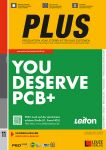 The article shows which substrate materials can be used in high-performance electronics for semiconductor dies. In particular, glass core substrates and their advantages are examined. The article looks at the properties of glass that still stand in the way of its use and at promising solutions.
The article shows which substrate materials can be used in high-performance electronics for semiconductor dies. In particular, glass core substrates and their advantages are examined. The article looks at the properties of glass that still stand in the way of its use and at promising solutions.
Cross-sector developments in current industrial production
April: European project on traceability for battery raw materials
A project with the somewhat unwieldy name 'MaDiTraCe' is presented. It aims to ensure sustainable and transparent supply chains for mineral raw materials on the basis of generally recognized ESG (Environment/Social/Governance) standards and to integrate technological solutions for the traceability and certification of supply chains in a 'Digital Product Passport'. The focus is on raw materials that are important for the energy transition: Cobalt, natural graphite and neodymium.
August: Digital data rooms for small and medium-sized enterprises too
The article shows the opportunities for companies to jointly use cross-company digital data rooms. Manufacturing companies, which can create digital twins of their production in the data rooms, are particularly addressed.
October: Industry 5.0 - nonsensical, indispensable or unavoidable
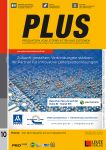 This provocative question is answered by Prof. Volker Banholzer from Nuremberg Institute of Technology in the final section of his interesting article. He begins by explaining that AI and machine learning call for new approaches in industry. In five steps, he examines the necessity of Industry 5.0. In the first step, he explains why social communication about current developments, e.g. nanotechnology and AI, is essential in order to evaluate these developments in society. In the next step, Prof. Banholzer explains the basic idea behind Industry 4.0 and why many ideas behind a development can be condensed into one term. The term Industry 4.0 has succeeded in doing this. The following section examines whether the development that has emerged in Germany under the term Industry 4.0 can also be regarded as an export hit and defined as a role model. The fourth section describes the development towards Industry 5.0. However, Prof. Banholzer uses the English term Industry 5.0 here to draw attention to the pan-European nature of the development. The so-called green gap, i.e. a broadening of the industrial base beyond the oil and gas industries, is taken up as a driving factor. Prof. Banholzer explains the different approaches of Industry 4.0 and Industry 5.0 and discusses the role of the EU Commission. The fifth point explains why Industry 5.0 is not just a political concept, but also important for companies.
This provocative question is answered by Prof. Volker Banholzer from Nuremberg Institute of Technology in the final section of his interesting article. He begins by explaining that AI and machine learning call for new approaches in industry. In five steps, he examines the necessity of Industry 5.0. In the first step, he explains why social communication about current developments, e.g. nanotechnology and AI, is essential in order to evaluate these developments in society. In the next step, Prof. Banholzer explains the basic idea behind Industry 4.0 and why many ideas behind a development can be condensed into one term. The term Industry 4.0 has succeeded in doing this. The following section examines whether the development that has emerged in Germany under the term Industry 4.0 can also be regarded as an export hit and defined as a role model. The fourth section describes the development towards Industry 5.0. However, Prof. Banholzer uses the English term Industry 5.0 here to draw attention to the pan-European nature of the development. The so-called green gap, i.e. a broadening of the industrial base beyond the oil and gas industries, is taken up as a driving factor. Prof. Banholzer explains the different approaches of Industry 4.0 and Industry 5.0 and discusses the role of the EU Commission. The fifth point explains why Industry 5.0 is not just a political concept, but also important for companies.


